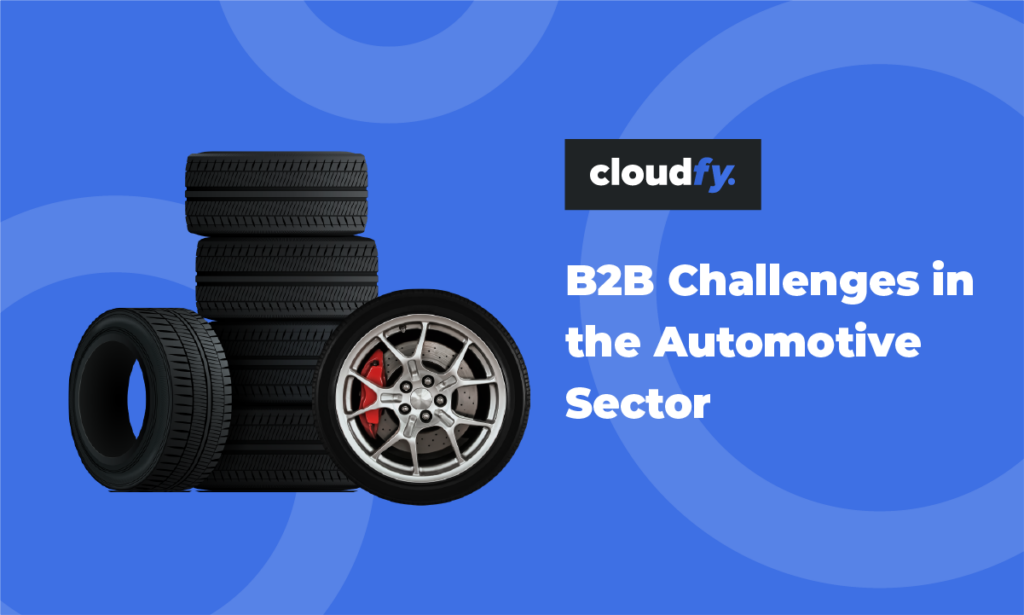A recent report from DHL highlights the importance of integrating business to business (B2B) ecommerce in your supply chain.
Adoption of B2B ecommerce accelerated during the pandemic, supported by secure encrypted payment systems. However, restricted international movement of goods clearly showed the B2B sector the risks associated with supply chain management and logistics.
In a fast-changing environment B2B companies must respond to shifting buyer behavior with an effective B2B ecommerce strategy. Customers are increasingly comfortable making high value purchases of US$500,000 or even US$1million in a single online transaction.
Making B2B ecommerce part of your supply chain management process improves planning, coordination, and effective production, sales, distribution and fulfillment. When everything works seamlessly the right products reach the right customers at the right time.
Table of Contents
Agility is the key
All B2B ecommerce businesses must maintain adaptability, agility, and responsiveness to meet buyer expectations while remaining cost-effective. Digital transformation and supply chain management integration are essential for survival.
Cloudfy is specifically designed to meet the needs of complex B2B operations. It’s a scalable, cost-effective option for delivering a fully integrated ecommerce strategy. It includes integration options for major business systems, an application programming interface (API) for customization and interfaces with third-party systems.
Importantly, regular upgrades are automatically deployed in the cloud. It’s a ‘future-proofed’ option that allows your business to respond quickly to changing conditions.
Customer experience experts highlight that B2B buyers now look for much more from their suppliers and business partners. Seamless end to end information, security and high quality service are minimum requirements. This is only achieved when your ecommerce platform is recognized as a key part of your supply chain.

Barriers to integrating B2B ecommerce in your supply chain
Fewer than one in five businesses recently surveyed said they offered full end-to-end integration. Barriers include concern within IT departments about control of ecommerce technology and sales team resistance to automation. Many business leaders don’t yet fully understand the business benefits and risks of falling behind.
While almost two thirds of B2B companies now have ecommerce capabilities their digital strategies vary dramatically. Businesses that succeed will deliver outstanding service and achieve increased profitability.
In the next three to five years, more than half of businesses will change distribution practices. They must be ready to deal with:
- evolving customer expectations
- conflicting business priorities
- limitations in existing infrastructure
- increasing costs
- modernizing technology
- creating a fully developed strategy
- achieving organization-wide adoption
- finding the right business partners.
To attract new customers and retain existing ones, B2B supply chains must adopt new business models and service levels. This includes partnerships with third-party logistics companies (3PLs) to complement in-house resources and capabilities.

Meeting customer expectations
Same-day delivery, real-time track-and-trace, return options and flexible delivery choices are just some of your buyer’s expectations. Increasingly, customers base their purchasing decisions on how well businesses meet their demands. To meet and exceed expectations B2B ecommerce companies are in a race to balance cost and service across the whole business.
Although B2B ecommerce implementation is catching up with B2C practices, the starting points have been very different. In terms of inventory management and distribution B2B businesses currently have many different ways of handling and fulfilling ecommerce orders. Two or more distribution methods are common. Even though more than half of businesses plan changes it isn’t yet clear which approaches will best meet requirements.
We like to discuss how Cloudfy addresses barriers to full B2B ecommerce implementation with forward-thinking businesses. Please get in touch.
Frequently Asked Questions
B2B ecommerce is critical to effective supply chain management, helping you improve customer satisfaction, reduce costs, and increase profitability. By streamlining end to end processes you improve efficiency and inventory visibility. Your business becomes more competitive by meeting the expectations of your customers and providing around the clock self-service.
B2B ecommerce simplifies procurement both upstream and downstream. It allows you to improve purchasing through integration with your suppliers. Working with logistics partners you can also minimize bottlenecks. Your customers can buy from you more easily and maintain control of their own procurement processes. Data collected helps improve every step in the process and speed up resolutions if problems arise.
B2B ecommerce businesses can optimize their inventory levels through integration with supply chain management. This supports efficient and cost-effective order fulfillment processes and optimized logistics and delivery. Ultimately better visibility allows manufacturers, distributors and wholesalers to improve relationships with customers and negotiate favorable terms.
Supply chain disruptions can interrupt production leading to delayed deliveries, customer dissatisfaction and potential loss of trust. Out-of-stock situations due to shortages of raw materials or components mean lost sales opportunities. Important contracts could even be lost. As the costs of storage and transport increase improved visibility and efficiency can help reduce operational expenses.
Integrating supply chain management with your B2B ecommerce operations helps to optimize inventory visibility for your customers. You can improve demand forecasting to prevent out of stock situations so customers can always find what they want. Increased efficiency improves delivery times and also shortens the order to cash process.






